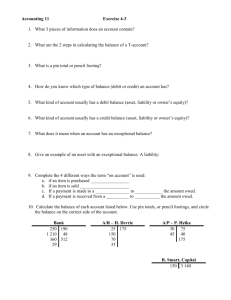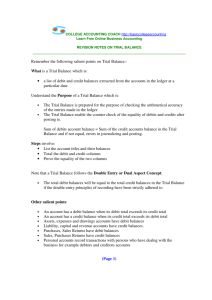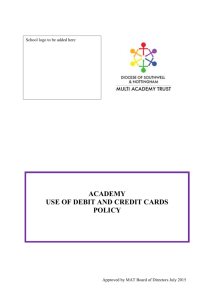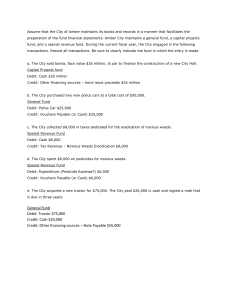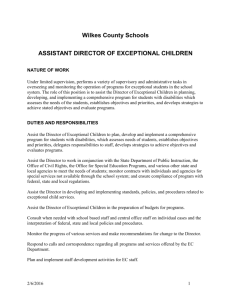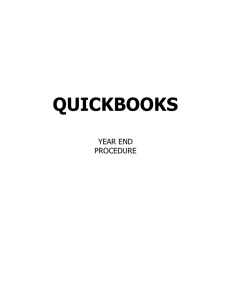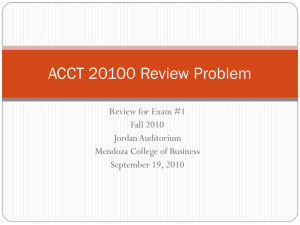Exceptional Balance
advertisement
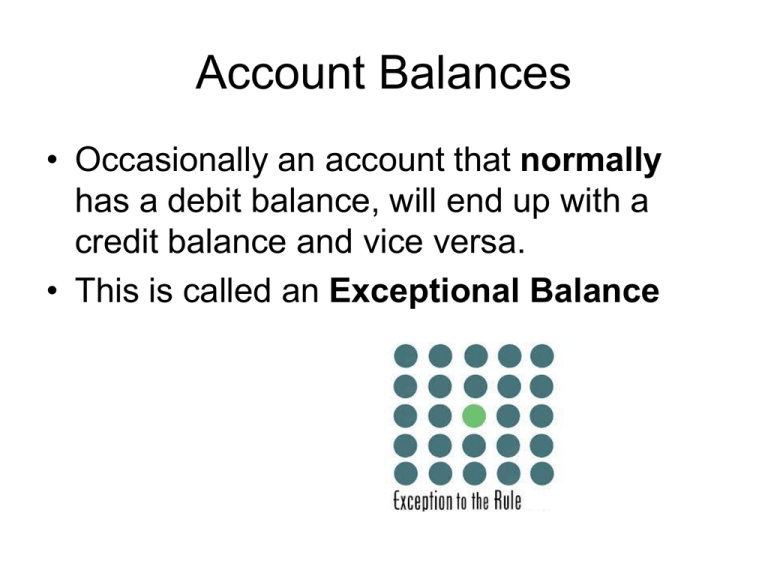
Account Balances • Occasionally an account that normally has a debit balance, will end up with a credit balance and vice versa. • This is called an Exceptional Balance Exceptional Balances • An Asset has a Credit balance • A Liability has a Debit balance • Capital has a Debit balance A/R 550 A/P 555 850 5 5 Capital 845 1000 100 900 Examples of Why Exceptional Balances Happen • Your business overpays an accounts payable • A customer with no account balance returns unsatisfactory merchandise • A purchaser returns goods for credit to a supplier with whom there is no account balance. Exceptional balances do not last long. They usually return back to normal with regular business activity. Example: Bookkeeping FOR BELL 1. 2. Bell Canada sends Mr. Huff his Bell phone Bill of $56 for telephone services provided in the month of September. Mr. Huff recently overpaid her Bell phone bill which was $56 dollars and instead he paid $65. Bell Canada has not earned the extra $9 so they cannot count that as their revenue. Dealing with Exceptional Balances • Double check your accounts – may be an error • In theory • Assets with exceptional balances becomes a Liability but stays in the assets section of the Balance Sheet as a negative • Liabilities with an exceptional balance in theory become an asset, but stay in the liabilities section of the balance sheet as a negative. Terms – Bank /Cash • Bank/Cash – Terms are used interchangeably – Usually Cheques or ETF (electronic fund transfer) is used – Going forward will refer to as BANK – Cash or cheque is used interchangeably but both mean that an item is paid for a the time it is purchased. Terms – On Credit • Buying/Selling on credit – The purchaser is able to delay payment for a short period of time, usually 30 days – Gives the purchaser time to inspect the goods and return any defective items. – If a business is buying goods on credit = + A/P – If a business selling goods on credit = + A/R Terms – On account • Purchase on account – not paid for at time of purchase (like buying on credit) • Sale on account – cash is not received at the time it is sold (like selling on credit) • Payment on Account – money is paid out to a creditor to decrease amount owed • Receipt on Account – money is received from a debtor to reduce the amount owed. • Purchased on Account An Asset A/P debit credit • Sold on Account Accounts Receivable debit Capital credit • Paid on Account Bank credit Accounts Payable debit • Received on Account Bank debit Accounts Receivable credit

